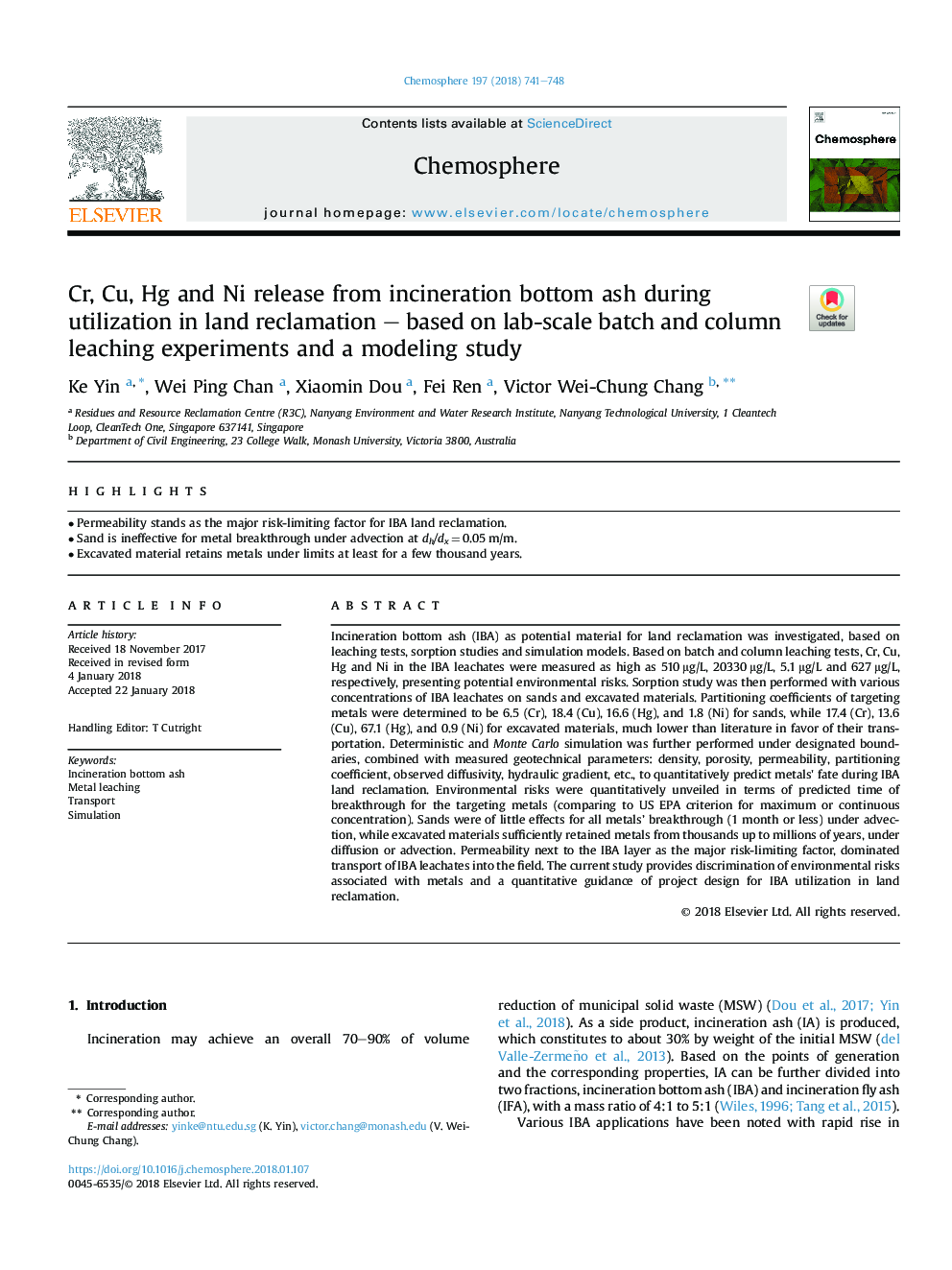| کد مقاله | کد نشریه | سال انتشار | مقاله انگلیسی | نسخه تمام متن |
|---|---|---|---|---|
| 8852039 | 1618774 | 2018 | 8 صفحه PDF | دانلود رایگان |
عنوان انگلیسی مقاله ISI
Cr, Cu, Hg and Ni release from incineration bottom ash during utilization in land reclamation - based on lab-scale batch and column leaching experiments and a modeling study
دانلود مقاله + سفارش ترجمه
دانلود مقاله ISI انگلیسی
رایگان برای ایرانیان
کلمات کلیدی
موضوعات مرتبط
علوم زیستی و بیوفناوری
علوم محیط زیست
شیمی زیست محیطی
پیش نمایش صفحه اول مقاله

چکیده انگلیسی
Incineration bottom ash (IBA) as potential material for land reclamation was investigated, based on leaching tests, sorption studies and simulation models. Based on batch and column leaching tests, Cr, Cu, Hg and Ni in the IBA leachates were measured as high as 510â¯Î¼g/L, 20330â¯Î¼g/L, 5.1â¯Î¼g/L and 627â¯Î¼g/L, respectively, presenting potential environmental risks. Sorption study was then performed with various concentrations of IBA leachates on sands and excavated materials. Partitioning coefficients of targeting metals were determined to be 6.5 (Cr), 18.4 (Cu), 16.6 (Hg), and 1.8 (Ni) for sands, while 17.4 (Cr), 13.6 (Cu), 67.1 (Hg), and 0.9 (Ni) for excavated materials, much lower than literature in favor of their transportation. Deterministic and Monte Carlo simulation was further performed under designated boundaries, combined with measured geotechnical parameters: density, porosity, permeability, partitioning coefficient, observed diffusivity, hydraulic gradient, etc., to quantitatively predict metals' fate during IBA land reclamation. Environmental risks were quantitatively unveiled in terms of predicted time of breakthrough for the targeting metals (comparing to US EPA criterion for maximum or continuous concentration). Sands were of little effects for all metals' breakthrough (1 month or less) under advection, while excavated materials sufficiently retained metals from thousands up to millions of years, under diffusion or advection. Permeability next to the IBA layer as the major risk-limiting factor, dominated transport of IBA leachates into the field. The current study provides discrimination of environmental risks associated with metals and a quantitative guidance of project design for IBA utilization in land reclamation.
ناشر
Database: Elsevier - ScienceDirect (ساینس دایرکت)
Journal: Chemosphere - Volume 197, April 2018, Pages 741-748
Journal: Chemosphere - Volume 197, April 2018, Pages 741-748
نویسندگان
Ke Yin, Wei Ping Chan, Xiaomin Dou, Fei Ren, Victor Wei-Chung Chang,